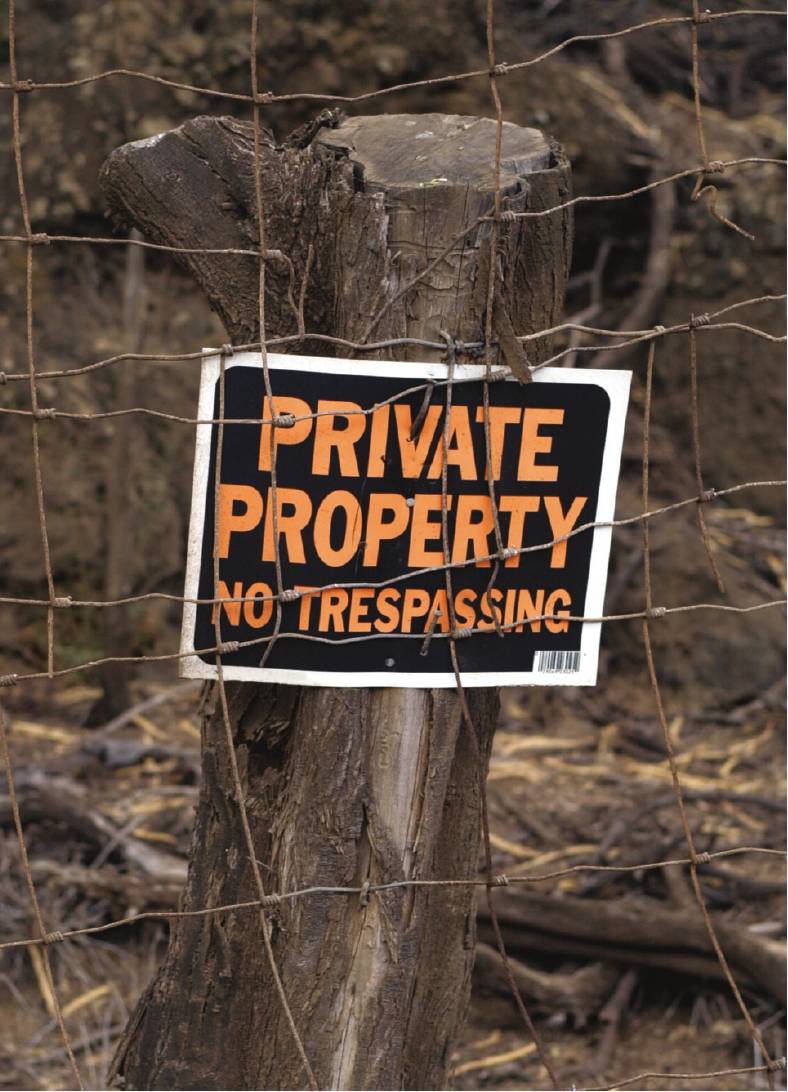Land Registry update
Land Registry update: a guide to prescriptive rights of way
Tim Smithers offers an overview of the issues to consider when making an application to Land Registry to register a prescriptive right of way.

About the author
Tim Smithers is an assistant land registrar at Land Registry.
Prescription is a complex area of law described, in part, as ‘a mixture of inconsistent and archaic legal fictions, practical if sometimes haphazard judgemade rules, and … well-meaning but ineptly drafted statutory provisions’ (Lynn Shellfish Ltd and others v Loose and another [2016] UKSC 14 para 38, per Lord Neuberger).
To start, a reminder of the four characteristics that are fundamental to all easements, whether express, implied or prescriptive as summarised in Re Ellenborough Park [1956] Ch 131.
- There must be dominant and servient land (that is, land which benefits and land that is burdened).
- The easement must benefit the dominant land. In most right of way cases, this is self-evident .
- The dominant and servient land must be in different ownerships.
- The easement must be capable of forming the subject matter of a grant. Rights of way are recognised, but car parking may not be.
Next, overlay the requirements for a claim by prescription.
There are three co-existing methods for claiming a prescriptive easement:
- the Prescription Act (PA) 1832;
- the doctrine of ‘lost modern grant’ , and
- common law.
Whichever method is relied on, the user must be for at least 20 years. Land Registry does not require an applicant to identify the method by which a right is claimed, but if a method is claimed, the application will be considered on that basis.
The PA requires evidence of 20 years’ use immediately before a ‘suit or action’ is brought.
The adjudicator to HM Land Registry has held that the making of an application to register a prescriptive easement, and its acceptance by Land Registry, constitutes a ‘suit or action’ (Wilkin & Sons Ltd v Agricultural Facilities Ltd [2012] EWLandRA 2011_0420 para 113). However, this is usually not an issue because Land Registry may also consider the application under the principle of ‘lost modern grant’ , where a ‘suit or action’ is not a pre-requisite .
Land Registry expects any application to provide evidence of 20 years’ use up to the date of the application, or an explanation for any non-use or interruption. However, ‘lost modern grant’ may assist an applicant in cases where there may be strong evidence of 20 years’ historic use, followed by a period of more limited recent use or of permissive use. This is because once the 20-year period has been established, a fictional grant is presumed that can only be extinguished by express or implied release.
In Orme v Lyons [2012] EWHC 3308 (Ch), the High Court upheld the decision of the deputy adjudicator to HM Land Registry that a vehicular right of way had been established where there was evidence of use at least 12 times a year, between 1971 and 1988, but much less use after the benefitting property changed hands in 1988. The court found that the claimant’s user was capable of being seen as carrying to the mind of a burdened owner that a continuous right to enjoyment was being asserted, and that the claimant’s user was a continuation of his predecessor. (The leading case is the Court of Appeal decision in Tehidy Minerals v Norman [1971] 2 QB 528.)
In European Urban St Pancras 2 Ltd v Glynn (2013) PLSCS 67, a county court decision, the claimant was able to demonstrate 20 years’ uninterrupted use of car parking spaces, as of right, up to 2003. After 2003, the claimant entered into a lease for those spaces with the servient landowner. The court held that the permission granted by the lease did not prejudice the prescriptive rights that had arisen before 2003.
Use must be continuous, but it need not be constant. The required regularity of use depends on the nature of the right claimed (for example, whether a road or a drain) and the extent to which the servient owner ought to have been aware of it.
Regularity must be distinguished from ‘interruption’ , the latter meaning an obstruction whether by the burdened owner or a third party which prevents the use of the claimed easement. For PA claims, an interruption of less than a year does not prevent time running.
In preparing an application, it is wise to assume that a nonuser for more than a year is likely to be fatal unless explained in such a way as to infer continuity of enjoyment during the 20-year period (Hollins v Verney (1884) 13 QBD 304 at 314 et seq).
Land Registry considers each application on its facts, but the following reported cases illustrate some of the issues:
- Use of a way on six to ten occasions a year for agricultural purposes was sufficient (Diment v NH Foot Ltd) [1974] 2 All ER 785).
- A way used for removing wood on only three occasions, at intervals of 12 years, was not sufficient (Hollins above).
- A gap of ten years in the use of a road for commercial purposes was fatal to the claim (( 1) The estate of William Brimley Llewellyn deceased (2) Llewellyn v (1) Lorey (2) Lorey [2011] EWCA Civ 37).
- Use was sufficiently continuous where frequency of use varied at different periods over 30 years, including lengthy but explained interruptions (Healey v Hawkins [1968] 1 WLR 1967).
It is essential to identify the scope of the historic use ‘as of right’ for the requisite period, because this defines the extent of the acquired right (Lynn Shellfish Ltd above at para 46). For example, is a claimed right of way for vehicular use or limited to pedestrian use; and is it for all purposes or limited to residential or agricultural purposes? The issues may be complicated where the nature and intensity of use or the route of a claimed right of way have changed over the period.
As Lord Neuberger explained in Lynn Shellfish Ltd above, the quality of the use required to establish a prescriptive easement is embodied in the expressions, synonymous in their meaning and effect, ‘“ as of right” and nec vi, nec clam, nec precario’ (without force, secrecy or permission) (para 37). Persons claiming to have acquired a right by prescription ‘must by their conduct bring home to the landowner that a right is being asserted against him, so that the landowner has to choose between warning the trespassers off, or eventually finding that they have established the asserted right against him’ (R (Lewis) v Redcar and Cleveland BC (No 2) [2010] 2 AC 70 para 30, per Lord Walker).
It may, for example, be difficult to distinguish between permission granted by a potential servient owner and passive toleration: the former preventing use as of right, the latter not (London Tara Hotel Ltd v Kensington Close Hotel Ltd [2011] EWCA Civ 1356).
The concept of ‘without force’ was recently considered by the Court of Appeal in (1) Winterburn (2) Winterburn v (1) Bennett (2) Bennett [2016] EWCA Civ 482. Signs displayed by a landowner stating that the disputed land was private, and only to be used by its customers, were held sufficient to prevent an adjoining owner’s claim for a prescriptive easement. The court said that there was no obligation on the landowner to take further steps, such as confronting users orally or in writing, or taking legal proceedings.
Be alert to the following special circumstances that may require extra research and explanation:
- Where use has been obstructed by a potentially burdened landowner.
- If the right claimed may not be capable of being lawfully granted, for example, because of a statutory prohibition or incapacity on the part of the potentially burdened landowner.
- Where the claimant is a leaseholder or the burdened title includes leasehold interests.
- Rights of light, where different rules may apply.
- Railway and canal land (where prescriptive easement claims may be prohibited).
- Where the benefitting land does not adjoin the burdened land.

Critical to all applications is the scope and quality of evidence. Evidence must be provided in a statement of truth or statutory declaration to demonstrate in detail the use and enjoyment relied on to substantiate the claimed right. Form ST4 provides a framework, but it is not obligatory. Any relevant supporting correspondence or documentation should be provided.
Matters influencing the weight to be given to the evidence may include whether:
- the declarant has direct personal knowledge;
- there is independent corroboration of facts claimed;
- there are documents to support the claim (for example, an invoice for maintenance);
- periods of no or minimal use are adequately explained; or
- potentially conflicting evidence is refuted (for example, a claim that use was by permission); Land Registry will also consider the age, nature and geography of physical features, such as gates or paths.
Where the applicant does not have 20 years of direct personal knowledge, the application may include statements from previous owners or others who do. For instance, only an owner can say with certainty that no oral permission was given. Land Registry Practice Guide 52 sets out the requirements for a statement of truth.1
Prescriptive easements over registered land do not need to be completed by registration to take effect at law. In many cases, the easement will be an overriding interest.
However, the benefit of the right is a legal interest that may be registered as appurtenant to the claimant’s (dominant) title, and the burden registered against the neighbour’s (servient) title. There are advantages to registration; for example, a prescriptive easement that has been acquired, but which is not obvious on a reasonably careful inspection of the land or which is not regularly used, may be lost if a notice of the burden is not entered in the register of the servient title.
Land Registry examines each application on its own merits. Although the facts in any application may be superficially similar to those in a particular reported case, they will never be identical. Accordingly, the fact that a prescriptive easement was found to have arisen in a particular case does not necessarily mean that a similar application will proceed or that, if it does, that any objection will be groundless.
Practice guide 52 offers advice on the registration of prescriptive easements, including their status as overriding interests, the making and processing of applications for registration (including circumstances for serving notices on burdened properties and handling objections) and the nature of entries made on the register. Practice guide 62 offers more general advice on easements.2
The Queen’s speech, on 18 May 2016, included an announcement that the government will bring forward proposals to respond to the recommendations of the Law Commission’s report Making land work: easements, covenants and profits á prendre (Law Com No 327).3 If enacted, the proposals would simplify the current regime by creating a single statutory scheme for prescriptive easements.
1 Practice guide 52: easements claimed by prescription, available at: http:// tinyurl.com/jknl9h6
2 Practice guide 62: easements, available at: http:// tinyurl.com/jg4tdhh
3 Available at: http:// tinyurl.com/zgj7ecl